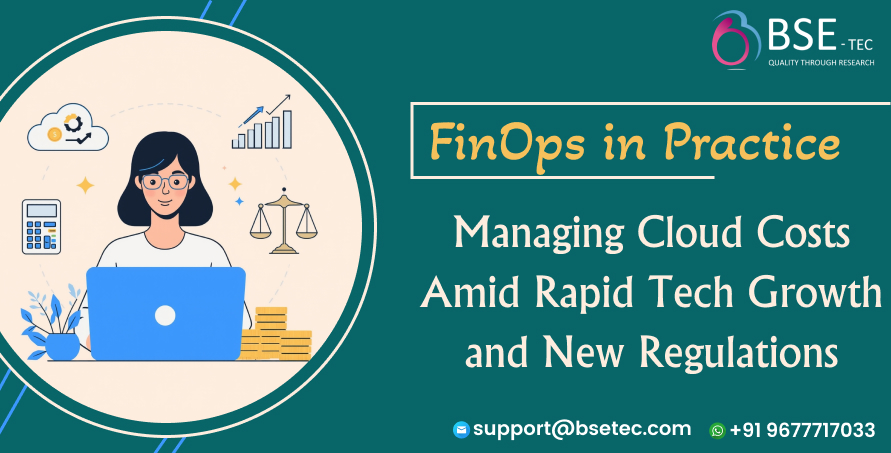
As the pace of digital transformation accelerates in 2025, organizations are scaling cloud infrastructure faster than ever. But with this rapid expansion comes a significant challenge: managing and optimizing cloud costs while staying compliant with increasingly complex data and regulatory frameworks. Enter FinOps—the operational model that brings financial accountability to the cloud.
What is DevOps?
DevOps combines development (Dev) and operations (Ops) to increase the efficiency, speed, and security of software development and delivery compared to traditional processes.
There are 4 phases of DevOps which namely ,
Phase 1: Bring Your Own DevOps (BYOD)
Phase 2: Best-in-class DevOps
Phase 3: Do-it-yourself (DIY) DevOps
Phase 4: DevOps Platform
What Is FinOps?
FinOps—short for Cloud Financial Operations—is a cross-functional discipline that blends finance, operations, and engineering to manage cloud spend effectively. Think of it as DevOps for cloud cost management.
FinOps is not just about cutting cloud bills—it’s about creating a cost-aware culture where every engineering decision is informed by financial impact.
The Core Principles of FinOps:
- Teams need to collaborate.
- Everyone takes ownership of their cloud usage.
- Reports should be accessible and timely.
- A centralized team drives FinOps practices.
- Decisions are driven by business value.
- The FinOps practice is iterative and evolves.
FinOps helps businesses align cloud spending with strategic goals, gain visibility into consumption, and remain compliant with emerging cloud governance and regulatory requirements.
Why FinOps Matters in 2025?
With hybrid and multi-cloud environments now the norm, companies are facing:
- Exploding cloud costs due to increased AI/ML, XR, and blockchain workloads
- Complex regulatory compliance (GDPR, HIPAA, DPDPA in India, and others)
- Increased pressure on IT budgets post-pandemic and amid economic uncertainty
FinOps offers a way to balance agility and control, enabling faster innovation without financial chaos.
| Stage | Activities |
| Inform | Gain visibility, track spend by service, team, project |
| Optimize | Rightsize resources, eliminate waste, negotiate pricing |
| Operate | Automate cost controls, set budgets, enforce policies |
For instance ,Once an eCommerce company using AWS notices spiking storage costs during seasonal sales. With FinOps:
- Engineers receive alerts tied to budget thresholds
- Resources are auto-scaled with cost limits in mind
- Finance and DevOps teams meet weekly to evaluate cloud efficiency
How Development Companies Like BSEtec Are Involved in FinOps? Companies like BSEtec are essential partners in helping businesses adopt and operationalize FinOps practices. Here’s how:
1. FinOps-Ready Cloud Architecture
BSEtec builds cloud-native applications with cost optimization in mind:
- Use of microservices and serverless where applicable
- Modular deployments that allow scaling of individual components
- Automated provisioning tools (Terraform, Ansible) with budget-aware templates
We don’t just build for performance. We design with cost-efficiency and compliance as core principles. – BSEtec Engineering Lead
2. Cloud Cost Monitoring and Analytics Integration
BSEtec integrates tools like:
- AWS Cost Explorer, Azure Cost Management
- Third-party FinOps tools like CloudHealth, Spot.io, or Kubecost
- Custom dashboards with Grafana or Power BI
These provide real-time visibility and actionable insights to both technical and financial stakeholders.
3. Compliance-Driven Development
With global regulations tightening, BSEtec ensures that all cloud projects:
- Are GDPR, HIPAA, or ISO 27001 compliant
- Include data locality and retention policies
- Apply tagging policies for cost traceability
This means clients can confidently undergo audits or meet compliance checks without scrambling for documentation.
4. FinOps Consulting and Workshops
BSEtec doesn’t stop at development—they also educate teams:
- Conduct FinOps workshops for clients’ DevOps and finance teams
- Create governance playbooks
- Help establish internal chargeback/showback models
This ensures the FinOps mindset becomes embedded within the organization, not just applied superficially.
5. Automation for Optimization
Using AI and ML, BSEtec automates:
- Cost anomaly detection
- Instance scheduling based on usage patterns
- Resource rightsizing recommendations
They also build CI/CD pipelines with cost gates—so if a new feature would cause excessive cost spikes, it’s flagged early.
In realtime , BSEtec + SaaS FinTech Platform’s AWS bill was growing 20% month-over-month due to inefficient storage and compute allocation which was the most challenging part wherein BSEtec provided solution in such a way,
- Audited architecture and implemented auto-scaling policies
- Introduced usage-based billing for end customers
- Created a custom FinOps dashboard integrating AWS and Stripe data
Which resulted with following,
- 35% reduction in cloud spend
- Zero downtime during optimization
- Complete budget visibility for product managers
Benefits of Partnering with BSEtec for FinOps
| Benefit | Impact |
| Custom FinOps tooling | Aligned with your architecture and team structure |
| Expert compliance integration | Stay ahead of global regulations |
| Data-driven decisions | Real-time insights improve tech-finance alignment |
| End-to-end service | From architecture to post-launch optimization |
As cloud ecosystems grow more complex, FinOps is no longer optional—it’s essential. Companies that fail to manage cloud costs risk losing competitive edge, falling out of compliance, or bleeding cash in unused services.
BSEtec is one of the key enablers helping organizations transition to cost-aware, cloud-native operations with FinOps best practices at the core. By blending technical expertise with financial insight, they empower businesses to innovate intelligently, transparently, and responsibly.
Would you like to upgrade your business with a FinOps service that’s suitable for your company/business then do reach out to BSEtec
Did you find this article useful? Let us know by leaving a comment below, or join us on Twitter and Facebook.


